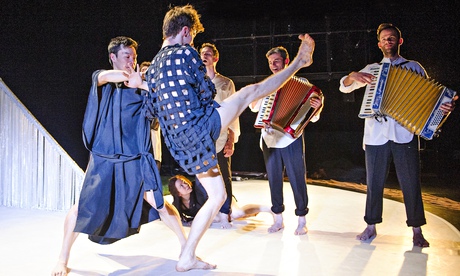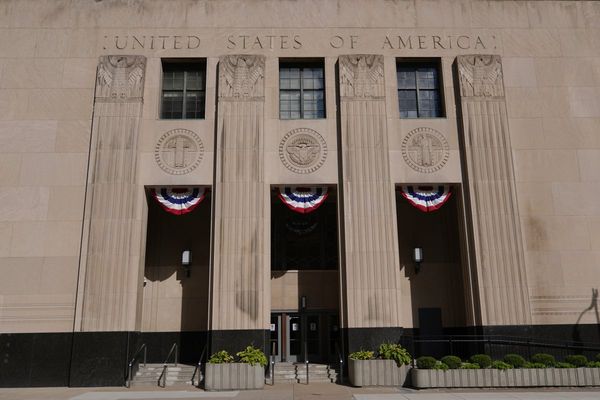
Fleur Darkin was moved to create Miann for Scottish Dance Theatre by the death of her stepfather, and by the lonely beauty of the landscapes among which she has lived since becoming director of the Dundee-based company in 2012. The Gaelic word “miann” means “the ardent desire to know God”, and the piece is Darkin’s attempt to recreate, on stage, the ecstatic union of land and community that the Celtic people are believed by some to have once enjoyed. As a reimagining of ancient earth ritual, set to contemporary music, it has elements in common with Nijinsky’s The Rite of Spring. In Darkin’s words, “I wanted the dancers to remind us that life is felt before it is thought about.”
As the audience takes its place, two female dancers costumed in loosely belted gowns stand on stage holding armfuls of tree blossom, and carrying smoking pots. Alexander Ruth’s set is circular, a clearing surrounded by sticks. At its centre is a glass-beaded curtain suggestive of a waterfall, and a rectangle of turf. Throughout the piece the glass curtain seems to act as an initiatory boundary. A portal that must be dared, and breached.
There’s a clear sexual element to all of this. At the beginning of Miann the company’s four men and four women are planted in confrontational symmetry, circling warily and probing each others’ defences. Darkin’s choreography is heftily, suggestively earthbound. Legs are muddy, hips shudder, bodies are low-slung. The women’s posture is martial; torsos poised watchfully in deep plié. In one sequence the whole cast squat like frogs. These attitudes are powerfully supported by the four musicians of the One Ensemble, playing at the side of the stage. By the harsh sawing of the cello, the snapping percussion, the insistent guitar. There are pursuits and couplings, some fierce, some almost lyrical. A woman crouches, a man folds about her. These are not an end in themselves, we understand, but a means to ecstatic loss of self. The piece closes with the cast leaping wildly in the dying light.
There is much to admire here, but we are also locked into the paradox of this kind of theatrical work. That every moment of the abandon is calculated, every spontaneous gesture choreographed. Miann never quite crosses the line. It never quite leads you through the glass waterfall to the other side. Sincerity is much in evidence, but not the visceral sense of unease, shock or dislocation engendered by, say, the early work of Pina Bausch. The best moments of Miann, for me, are choreographic rather than atmospheric. Darkin is a fine, physical dance-maker, and there are times when the swirling, Pictish mysticism occludes rather than enhances the spectacle.







